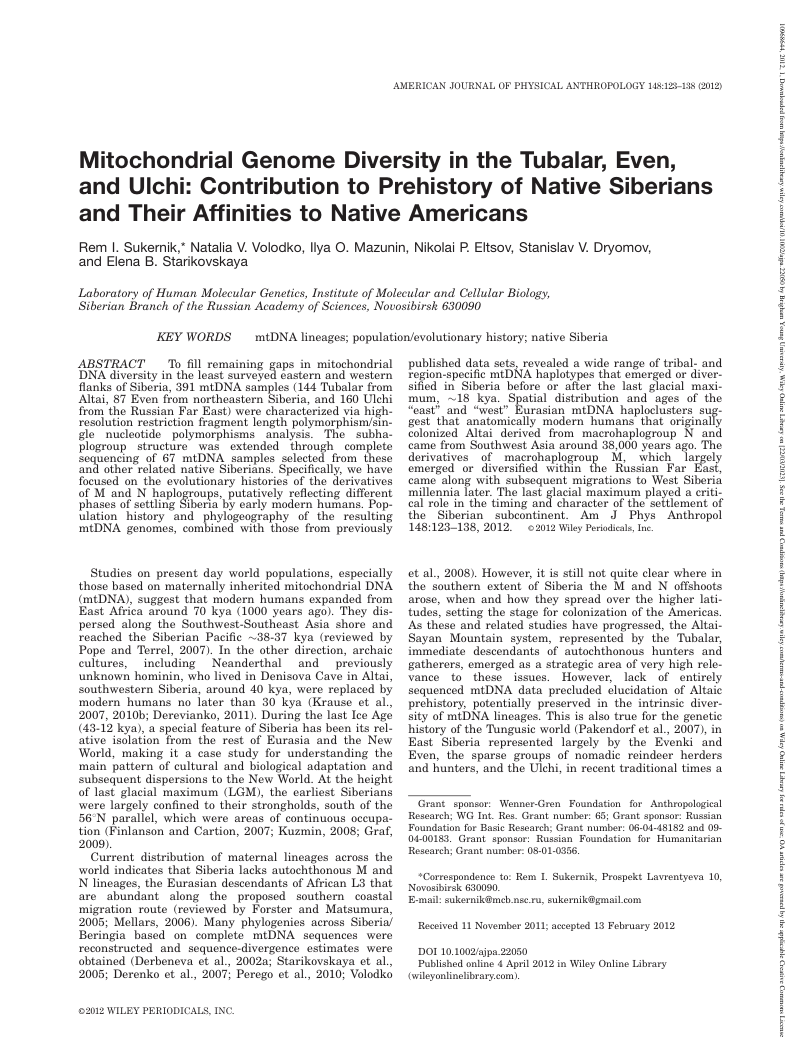Rem I. Sukernik et al. review haplogroups of Siberia, note presence of haplogroup X.
- Type
- Academic / Technical Report
- Source
- Rem I. Sukernik Non-LDS
- Hearsay
- Direct
- Reference
Rem I. Sukernik et al., “Mitochondrial Genome Diversity in the Tubalar, Even and Ulchi: Contribution to Prehistory of Native Siberians and Their Affinities to Native Americans,” American Journal of Physical Anthropology 148 (2012): 123-138
- Scribe/Publisher
- American Journal of Physical Anthropology
- People
- Nikolai P. Eltsov, Rem I. Sukernik, Elena B. Starikovskaya, Stanislav V. Dryomov, Natalia V. Volodko, Ilya O. Mazunin
- Audience
- Reading Public
- Transcription
To fill remaining gaps in mitochondrial DNA diversity in the least surveyed eastern and western flanks of Siberia, 391 mtDNA samples (144 Tubalar from Altai, 87 Even from northeastern Siberia, and 160 Ulchi from the Russian Far East) were characterized via high-resolution restriction fragment length polymorphism/single nucleotide polymorphisms analysis. The subhaplogroup structure was extended through complete sequencing of 67 mtDNA samples selected from these and other related native Siberians. Specifically, we have focused on the evolutionary histories of the derivatives of M and N haplogroups, putatively reflecting different phases of settling Siberia by early modern humans. Population history and phylogeography of the resulting mtDNA genomes, combined with those from previously published data sets, revealed a wide range of tribal- and region-specific mtDNA haplotypes that emerged or diversified in Siberia before or after the last glacial maximum, ∼18 kya. Spatial distribution and ages of the “east” and “west” Eurasian mtDNA haploclusters suggest that anatomically modern humans that originally colonized Altai derived from macrohaplogroup N and came from Southwest Asia around 38,000 years ago. The derivatives of macrohaplogroup M, which largely emerged or diversified within the Russian Far East, came along with subsequent migrations to West Siberia millennia later. The last glacial maximum played a critical role in the timing and character of the settlement of the Siberian subcontinent.
- Source Link
- https://pubmed.ncbi.nlm.nih.gov/22487888/
- Citations in Mormonr Qnas
The B. H. Roberts Foundation is not owned by, operated by, or affiliated with the Church of Jesus Christ of Latter-day Saints.

